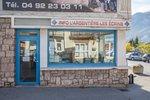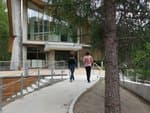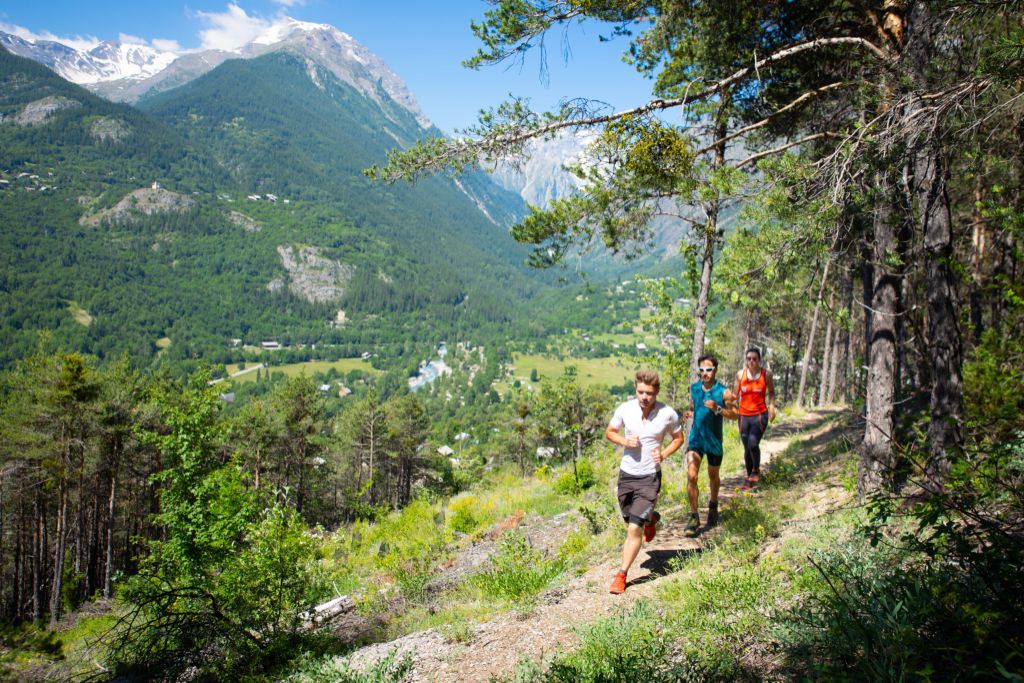
Trailounet (trail route no.16)
A trail inviting you to discover this unspoilt plain and also the hamlet of Le Grand Parcher. A view over the towering mountain of Les Bans awaits you and invites contemplation! To complete the trail, you follow the banks of the Gyronde and the Onde, breathing in the cool, fresh air.
Description
The route starts outside the Camping Huttopia de Vallouise. Follow signs for the village of Vallouise.
- Keep en eye out for the bridge on the right which takes you across the Gyr. After the bridge, take the road on the right.
- Head towards the road on the left and go along the edge of the cemetery.
- Carry on along the left-hand track. At the end of this track, take the track on the right that runs along the top end of La Casse. Then, go along a single track across the hillside, towards the top of La Champarie. Go along the side of a canal.
- At Le Grand Parcher, fork right and go through the hamlet to reach the D994E.
- At the stop sign, turn left and then fork right to cross the bridge spanning the Gyronde. After the bridge, head right onto a path that leads to the D4.
- When you come to the D4, cross it and continue along the path opposite which leads to the Onde. When you come to the Onde, turn right and then cross the bridge over the river. This brings you back to your starting point.
- Departure : Camping Huttopia, Vallouise
- Arrival : Camping Huttopia, Vallouise
- Towns crossed : Vallouise-Pelvoux
Altimetric profile
Recommandations
Before setting off, it is very important to check the opening periods for this route on the website: https://stationdetrail.com/fr/stations/le-pays-des-ecrins/parcours
Share your photographs on social networks with #stationdetrailecrins
Check weather conditions before setting off.
Rescue services contact details: Secours Montagne (Mountain Rescue): +33 (0)4 92 22 22 22 or 112
Show consideration for the work of farmers, livestock keepers and owners
Close all gates behind you
Take your litter home
Do not take shortcuts across pastureland
The trail routes are also suitable for walking
Information desks
23 Avenue de la République, 05120 L'Argentière-La Bessée
Vallouise Park house
, 05290 Vallouise
Information, documentation, models, exhibitions, screenings, product sales and works of the Park. Guided tours for school, reservation required. The new Park House opened in Vallouise since June 1, and offers visitors an interactive permanent exhibition inviting to explore the area and its heritage. A temporary exhibition space will allow a renewed offer. Finally, the device is completed by an audiovisual room to organize screenings and conferences Free admission. All animations of the Park are free unless otherwise stated.
Transport
Public transport >> www.pacamobilite.fr
Consider car-sharing >> www.blablacar.fr
For more information, ask at the Tourist Information Office nearest to the trail starting point.
Access and parking
10 km from L'Argentière-La Bessée, take the D994E.
Parking :
Sensitive areas
Short-toed snake eagle
- Impacted practices:
- Aerial,
- Sensitivity periods:
- MarAprMayJunJulAugSep
- Contact:
- Parc National des Écrins
Julien Charron
julien.charron@ecrins-parcnational.fr
8 points of interest

Pic nir et ses petits au nid - Robert Chevalier - Parc national des Écrins  Fauna
FaunaThe black woodpecker
Sporting a black cap, the black woodpecker is the biggest of the woodpecker family. Wary and solitary, it is difficult to spot, but its strident calls give its presence away. It feeds mainly on ants and insects living in dead trees, which it extracts by hammering into the wood. It hollows out a nest hole in trees. Once the young have left the nest, it may be taken over by owls or forest-dwelling bats.

La limodore à feuilles avortées (limodorum abortivum) - Mireille Coulon - Parc national des Écrins  Flora
FloraThe violet bird's-nest orchid
In the pine forest undergrowth stands a large, completely purple orchid. It has no leaves, just a few whitish scales on the stem. Lacking chlorophyll (the green plant pigment which plays a role in photosynthesis, the process that allows the production of organic matter), it lives as a parasite on tree roots.
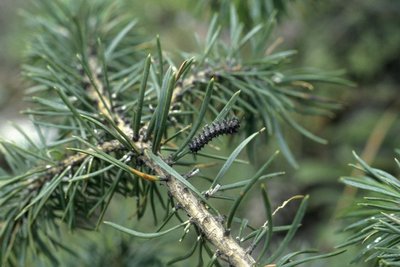
Aiguilles de pin sylvestre - Christian Baïsset - Parc national des Écrins  Flora
FloraThe Scots pine
A long trunk that is reddish-brown towards the top, sparse foliage, grey-green needles grouped in pairs... It has to be the Scots pine. Happy in poor soil, this softwood tree can withstand below-zero temperatures as well as summer droughts, and so it is very common in intra-alpine valleys with a continental climate, like the Vallouise.
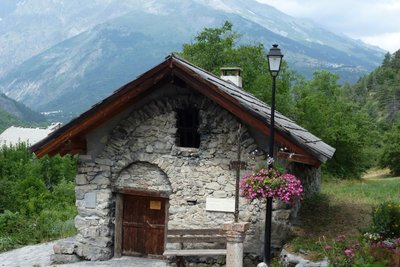
Le four banal du Grand Parcher - Office de tourisme Pays des Écrins  Vernacular heritage
Vernacular heritageThe hamlet of Parcher
The hamlet of Grand Parcher stands on the alluvial cone formed by the Grand Parcher mountain stream, and on either side of it. It is made up of several old houses and the seventeenth-century chapel of Saint-André. It has two sun dials painted onto its walls. One of them bears the saying HORA INCERTA CUNTIS, ULTIMA MULTIS (This hour is uncertain for all, it is the last hour for many). Food for thought!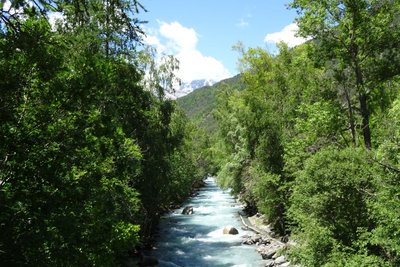
La Gyronde - Office de tourisme Pays des Écrins  Water
WaterThne Gyronde
No, we're not in south-west France where the Gironde flows! The Gyronde (spelt with a «y»!) is the river that flows between Vallouise and L'Argentière-La Bessée, where it flows into the Durance. It originates from the Gyr and Onde mountain streams which merge in Vallouise.
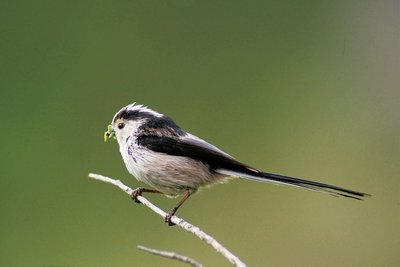
La mésange à longue queue - Robert Chevalier - Parc national des Écrins  Fauna
FaunaThe long-tailed tit
Some birds are causing a stir in a tree, constantly coming and going and uttering little calls. They are round and black and pinkish beige in colour with a long tails, hence their name, the long-tailed tit. They are resident birds and always live in small groups. They inhabit forests, undergrowth and even gardens. They weave a ball-shaped nest out of lichen, moss and dry grass.
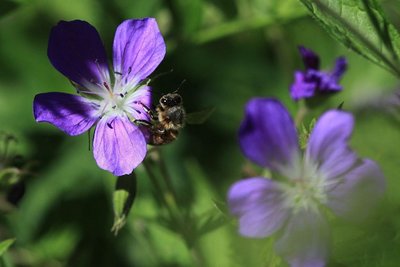
Géranium des bois - Marc Corail - Parc national des Écrins  Flora
FloraWood cranesbill
The path is edged with large clumps of a plant with purple flowers, the wood cranesbill. The leaves are palmate and divided into 5 to 7 incised and indented lobes, This common plant grows in meadows and cool woods. The «geraniums» we see on balconies are in fact pelargoniums, distant cousins originally from South Africa and cultivated for ornamental purposes.

Hélice des Alpes - Damien Combrisson - Parc national des Écrins  Fauna
FaunaThe Alpine copse snail
On the damp banks of the stream, hidden in the grass, is a snail with a beautiful golden brown shell speckled with brown, decorated with a dark spiral stripe. It has a black body. The alpine copse snail is relatively rare and, as its name suggests, it is found in the Alps. It is a sub-species of the ordinary copse snail, which is present across Europe.
Source

Report a problem or an error
If you have found an error on this page or if you have noticed any problems during your hike, please report them to us here:

